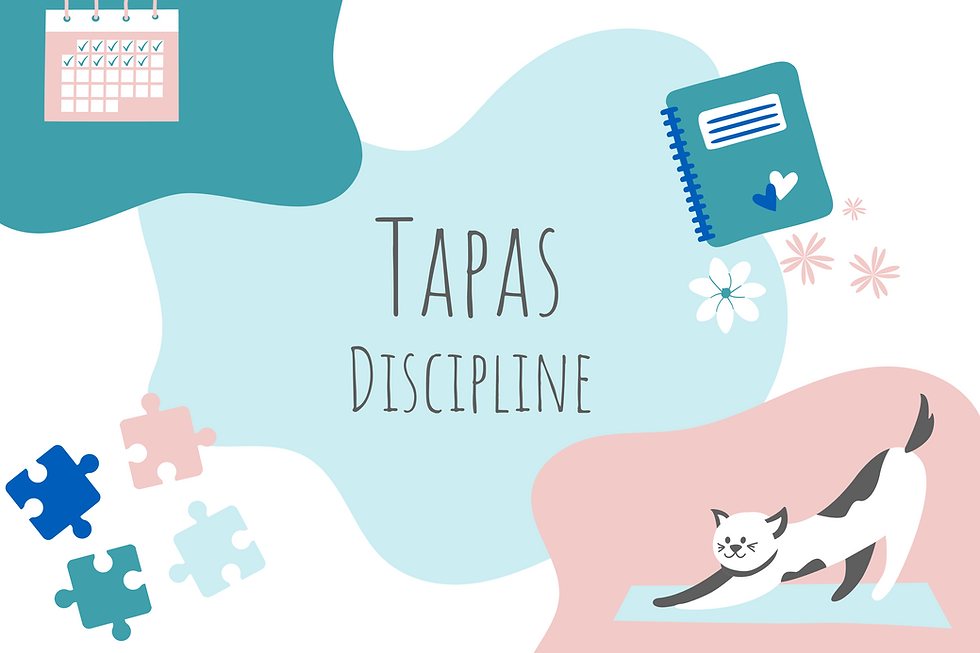What is Ahimsa?
- Cassie

- Dec 16, 2022
- 3 min read
Updated: Apr 21, 2023
Ahimsa, or non-harm, is one of five yamas.
The yamas, or restraints, are the first limb of the eight limbs of yoga, one equal part of an eight-fold path set out in Patanjali’s Yoga Sutras. The eight limbs of yoga are guidelines to help us live a meaningful life.
There are 5 restraints for a yogi to follow to bring peace and harmony into their lives and into the world:
Ahimsa (non-harm)
Satya (truthfulness)
Asteya (non-stealing)
Brahmacharya (energetic moderation)
Aparigraha (non-possessiveness)
Today, we’ll look into ahimsa.

So, what is ahimsa?
Ahimsa is the practise of not causing harm to other living things.
It is the action of love and compassion.
Everything is connected and interdependent. Every act or thought has consequences. If we send out harm or violence, we are creating a world with more harm and violence in it. We can’t expect peace in our own lives if we put out harm into the world.
Practising ahimsa can mean not physically harming ourselves, others, other forms of life or the environment. Ahimsa is about not letting our words and tones harm ourselves or others. But it's not just limited to our external actions. Ahimsa can also be not thinking negative thoughts about ourselves or others. By practising ahimsa, we are being mindful of our actions so that what we do and how we do it doesn’t cause harm.

How can you incorporate ahimsa into your daily life?
There are loads of ways you can start practising ahimsa. You may want to start small by practising gratitude and meditating. Being kind to yourself could mean setting time to do things you enjoy, feeling ok if you’re not productive every day, and not beating yourself up if you don’t get something done that you had planned. Set yourself realistic goals: you can’t do everything at once.
Often we find it most challenging to be kind to ourselves. It may be easier to start incorporating ahimsa into your life by first showing ahimsa towards others. This could be by showing forgiveness and empathy, generating loving thoughts, and trying not to be jealous or judgemental of others.
I find it helps to remind myself that I’m not alone: everyone else wants to be happy just like I do, and everyone else suffers just like I do.
Concerning other forms of life and the environment, you might want to try reducing or eliminating consumption of animal products, trying out plastic-free alternatives (such as bamboo toothbrushes or soap bars), and buying second-hand where possible.
There are so many ways we can practise ahimsa. But just because there are plenty of options, doesn't make it easy. It is something you need to re-commit to every day.
Can you think of other ways you could practise ahimsa?

What about ahimsa and yoga?
It makes sense to practise ahimsa during a yoga class. After all, the two are deeply connected: asana (the physical pose) is the third limb of yoga. Yoga is all about learning to listen to your body. You want to understand sensation and pain are different things. You don't need to aim to be perfect: yoga is about what feels good and what you enjoy.
You may want to try setting ahimsa as your intention during your next yoga class. Let it guide you through your practice. You may notice you approach asana differently and more easily recognise what your body needs that day.
If your body isn't up for doing a certain pose, you can practise ahimsa by saying it's ok not to do it. You don't need to push yourself into an uncomfortable position. Remind yourself that just showing up to the class and allowing yourself this time to be still and present is already an amazing achievement.
I'd love to hear your thoughts. What does ahimsa mean to you?




Comments